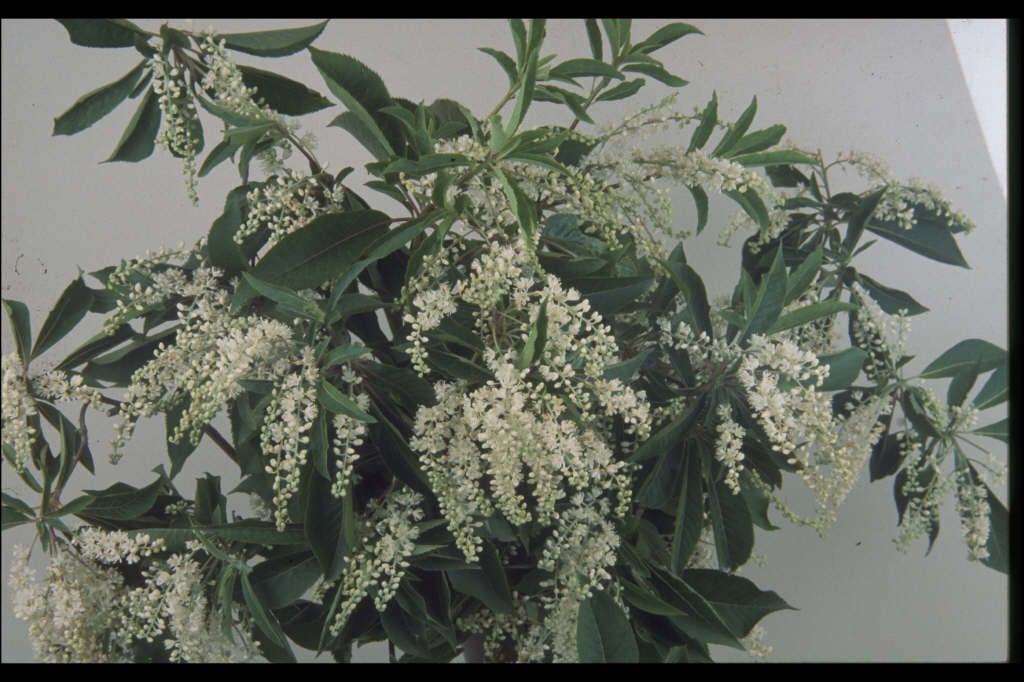Clethra barbinervis
Japanese clethra
A deciduous large shrub with attractive bark and obovate leaves to 12cm in length, turning red and orange in autumn. Small fragrant white flowers are borne in clustered racemes in late summer and autumn

Buy this plant
Size
Ultimate height
1.5–2.5 metresTime to ultimate height
10–20 yearsUltimate spread
1.5–2.5 metresGrowing conditions
Moisture
Moist but well–drainedpH
AcidColour & scent
| Stem | Flower | Foliage | Fruit | |
| Spring | Brown Orange | Green | ||
|---|---|---|---|---|
| Summer | Brown Orange | White | Green | |
| Autumn | Brown Orange | White | Orange Red | |
| Winter | Brown Orange |
Position
- Full shade
- Partial shade
Aspect
East–facing or North–facing or West–facing
Exposure
Sheltered Hardiness
H5Botanical details
- Family
- Clethraceae
- Native to GB / Ireland
- No
- Foliage
- Deciduous
- Habit
- Bushy
- Genus
Clethra can be deciduous or evergreen trees or shrubs, sometimes with attractive bark, with simple leaves and small, fragrant, usually white, bell-shaped flowers in racemes or panicles
- Name status
Correct
- Plant range
- E China to Japan
How to grow
Cultivation
Grow in fertile humus-rich moist but well-drained acid soil, best in part or dappled shade
Propagation
Propagate by seed or softwood cuttings
Suggested planting locations and garden types
- Cottage and informal garden
- Low Maintenance
- Flower borders and beds
Pruning
Pests
Generally pest-free
Diseases
Generally disease-free
Get involved
The Royal Horticultural Society is the UK’s leading gardening charity. We aim to enrich everyone’s life through plants, and make the UK a greener and more beautiful place.